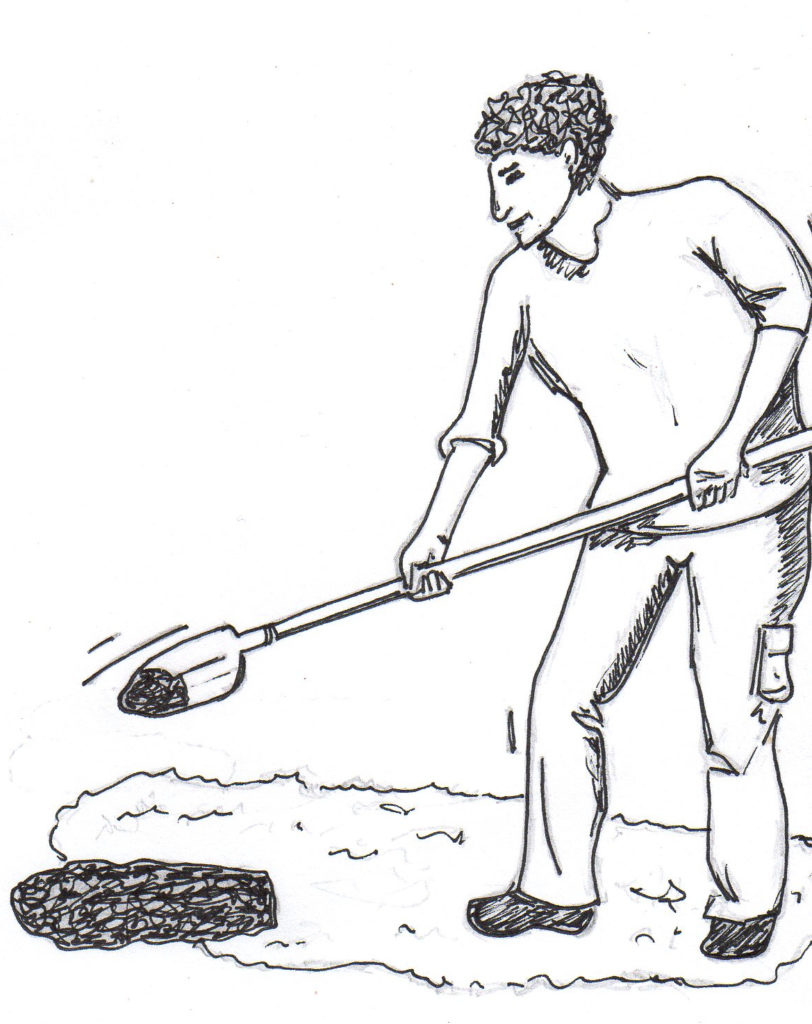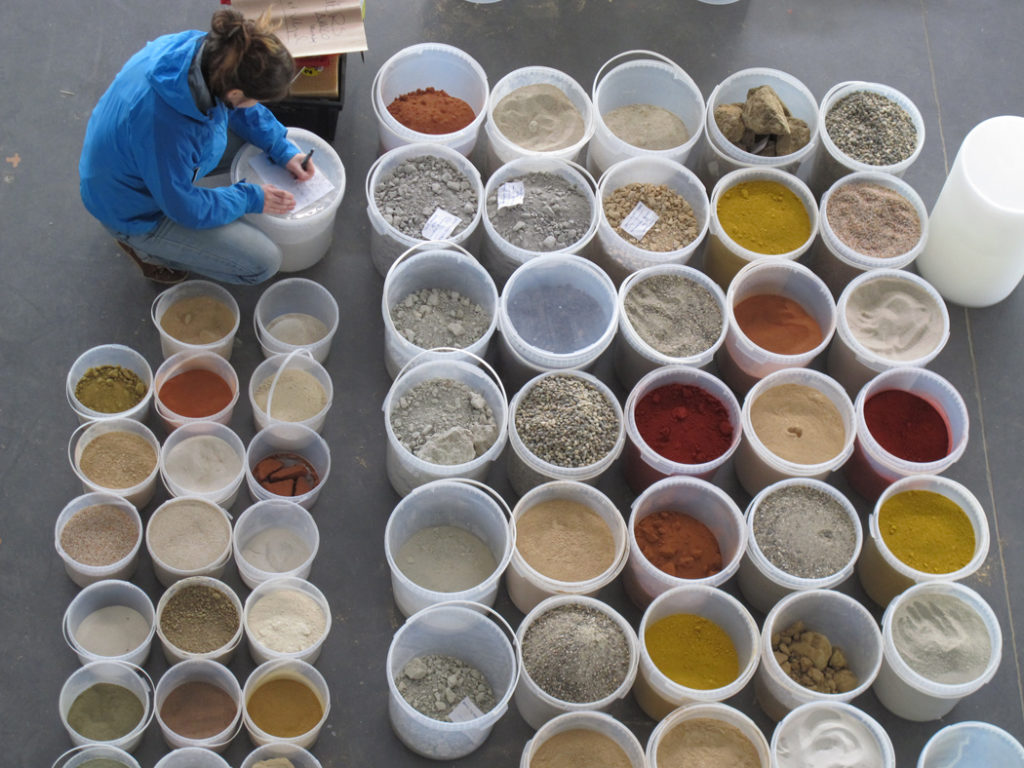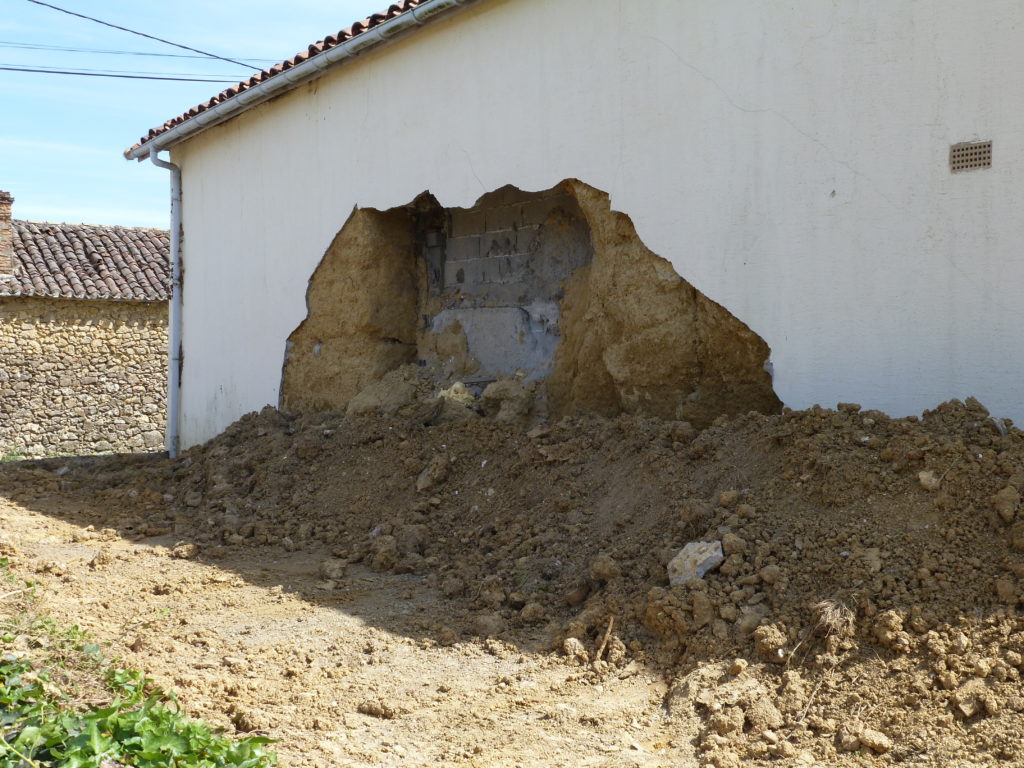Without digging into the heart of the matter, we will explain clearly the relevance and advantages of using raw clay in dwelling. And there are plenty of them, as in all possible constructive techniques.
AN UNBEATABLE ENVIRONMENTAL OUTCOME
The environmental benefits of using raw clay are obvious : it is a natural material, fully recyclable. It has to be thought through a process of local distribution network, meaning that the clay extraction should be done in-situ or close to the construction site. The « local material » notion takes on its full meaning here, reducing that way the extraction, transformation, and transportation costs. Traditionally and just like nowadays, techniques using raw clay weren’t asking for a lot of equipment. When aware of the fact that the building sector is one of the biggest energy consumers, it works in favor of low-energy techniques. Finally, using local and natural materials weighs on the carbon emissions and ecological footprint of buildings.
UNDENIABLE ECONOMIC ADVANTAGES
That logically leads us to its economic appeal. From this point of view, the material is cost-effective because if we work with clay extracted near the construction site, being produced and transformated there as well, it doesn’t cost anything. Raw material is, indeed, free of charge. Moreover, when it is about restoring an earthen structure, the clay already present can be reused for the new one. There are some cases where the clay is bought (ready for use, in big bags,…) but it only concerns works in urban areas or when there isn’t any clay at your disposal. In that case, it is questionable whether its use is really relevant. Broadly speaking and except the case of auto-constructors, when the work is given to artisans, it is a way to plebiscite the local economy. Using local products and businesses supports local distribution network and benefits directly to the region’s economic activity.
If we take a closer look to the relevance of clay in dwelling and on its inhabitants, we must focus on the healthy side of the material. Its implementation and presence does not harm the artisans and the residents health. Given the time spending in our homes, it is important to choose healthy materials so we can protect our health. Unlike some finishing products containing Volatile Organic Compounds (COV), earthen plasters do not release any toxic or carcinogenic emanations.
A HEALTHY THERMAL INERTIA
Clay also brings an unquestionable indoor comfort. It has thermal qualities like inertia gain and hygrometry regulation, providing an indoor athmosphere warm and healthy all year long.
Inertia is a material’s capacity to store and retrieve heat diffusely. This allows us to obtain thermal dephasing over time in relation to the outdoor’s temperatures. Clay, sand, lime mortars, are high inertia materials. They are heavy and must be asociated with a good insulation so that the comfort is optimized, both in summer and winter.
Hygrometry characterizes air humidity, more precisely the amount of water in gaseous form present in the air. Clay is a breathing material, allowing the natural regulation of steam, which has to freely move around the habitation, so it does not cause any damage. Concretely, a perspirant wall enables gaz exchanges and regulates ambiant humidity indoors by absorbing and retrieving steam naturally (emitted by our breaths, bathroom use or when we cook).
Furthermore, clay provides acoustic comfort between two rooms.
THE PROPERTIES OF THIS MATERIAL ARE INFINITE
Finally, there is a wide diversity of clay. This offers a broad range of textures and colors, adaptable to all intereriors and to everyone’s taste. Smooth, textured or brushed finishing, fiber or decoration inlay, scrafitos and other graphism techniques, molded or adobe bricks where strata appear, ochre, red, white, and many other shades, clay offers an infinity of possibilities.
Thanks to its multiple assets, raw clay is nowadays getting a newfound interest from artisans, individuals, etc. But its use in construction had been long forgotten. While it was one of the first materials used for construction by humans, it is now off the radar. With the post-war industrial revolution, materials like concrete and steel have in fact flooded the market at the expense of local techniques and materials. Faster to build, offering new possibilities and another architecture, artisans have, over time, forgotten their traditional expertise. The clay material has fallen into oblivion, relegated to the status of poor material. Thankfully, ponctual and oral transmission has never stopped and since a few years now, the aknowledgement of the clay patrimonial value and of its multiple qualities is being highlighted.






Raw clay :
- -> recyclable -> accessible -> local distribution network -> biodegradable -> natural material
- -> self-builders -> artisans -> local economy -> short supply chain -> free raw material
- -> healthy material -> indoor decoration -> textures -> huge diversity -> colors
- -> breathing material -> indoor comfort -> inertia contribution -> humidity -> hygrometry regulation -> thermal dephasing
BEST PRACTICES FOR EARTHEN HERITAGE :
CONSTRUCTION BY THE BOOK AND PROBLEMS ENCOUNTERED
Some of the constructions present pathologies. It is necessary to understand them to avoid them better, fix them even, and explain to users the best practices for an earthen building maintenance.
« A good hat and good boots » is the motto of raw clay construction. To guarantee the durability of such a construction, this rule must be applied.

In concrete terms, this means that an earthen wall must be thought and built within a set protecting it from water, its worst enemy. Boots represent the capillary rupture with the ground. To avoid important rising damp inside the walls, a barrier must be placed between the wall base and its support. Traditionally, constructions had no foundations but on some of them, we can find for example a stone foundation or the wall base stabilized with lime. Wood frame houses for their part, rest on a low rail that raises the clay from the ground. As for the hat, it is the representation of a roofing with eaves overhangs, protecting the wall from the bad weather.
In general terms, the pathologies observed on raw clay buildings are the result of an accumulation of causes that have two factors : natural factors and human factors. They are the visible effect of a slow and complex degradation process which must be analyzed before we can find the primary cause and therefore the suitable solution.
The natural factors represent a tiny fraction of the pathologies because if the construction has been built by the book, like explained earlier, and if the building heritage has been well maintained and preserved through the generations, then the earthen structures have a life span of several centuries.
The main pathologies encountered in earthen constructions are the following :
- erosion of wall heads
- destructive horizontal grooves along the wall
- capillary rise from the wall base
- presence of moss, lichen and mushrooms on the walls
- small or large vertical cracks
- splintering, detachment or cracks of the plaster used as a coating
- damaged or collapsed wall sections
- two wall sections moving apart at corners
These pathologies are generally caused by human factors (detailed below), but the effects of time can damage a protective coating and generate important degradations, because the clay material is soaked in water, and therefore no longer cohesive. Regarding climatic conditions, the Gers (southwest of France) is not a department in which rainfall is very important but climate change has visible effects, such as consecutive winters with a high raining intensity. Then, weather conditions like strong wind or natural hazard, for example an earthquake, can also cause major damages.
The next step is to identify the indicators behind these deteriorations. Among them, unsuitable habits related to our lifestyles or to the construction methods evolution generate most of the nuisances. These practices include :
– the presence of watertight surfaces surrounding the earthen building : cement curbs around ancient constructions, tarred and impermeable floor which progressively replaced grassed plots, construction of roads at the edge of houses, which increases the height of exterior ground surfaces compared to interior ones. These elements prevent soil moisture from draining freely.
– storing materials against the wall, causing suffocation of its base and creating surface problems due to non-ventilation.
– laying interior and exterior non-breathing or watertight floor coverings : interior cement slab, tiling, plastic… It is very common and it provokes multiple damages with time because humidity can no longer escape naturally.
– installation of interior and exterior non-breathing or watertight wall coverings : cement plasters, tiling, plastic… It is frequent and causes multiple damages with time because humidity can no longer escape naturally.
– a deteriored roof, or showing leakage, creating a direct path for water.
– poor drainage or terrain profile that triggers wateragnation.
Beside that, conception errors also lead to disturbances. If the building has evolved over time (adjoining extension for instance), care must be taken at roof junctions which can bring too much water onto a facade or the creation of openings too close to corners, which can weaken a wall.

A collapsed piece of wall enclosed between a cement plaster and breeze-blocks

A collapsed wall caused by a damaged roof (structural thrust and water infiltration)

Vertical crack in the corner of a half-timbered house















